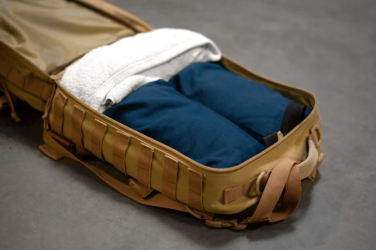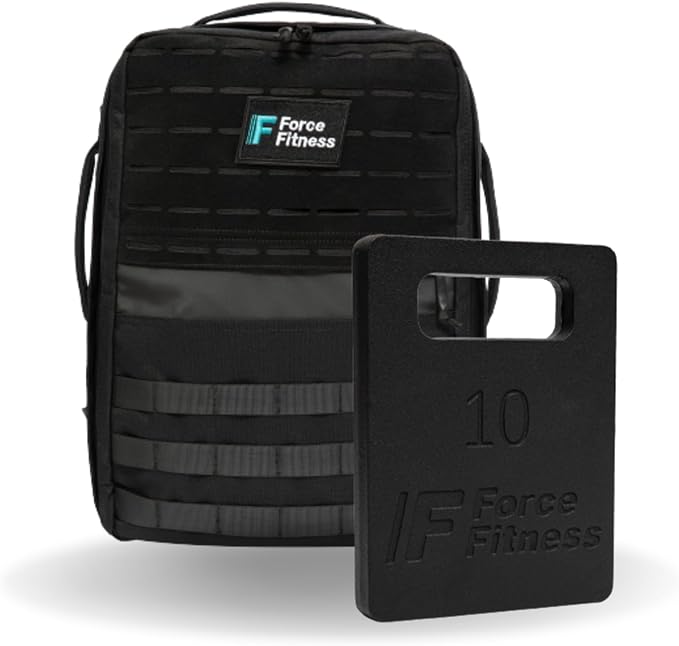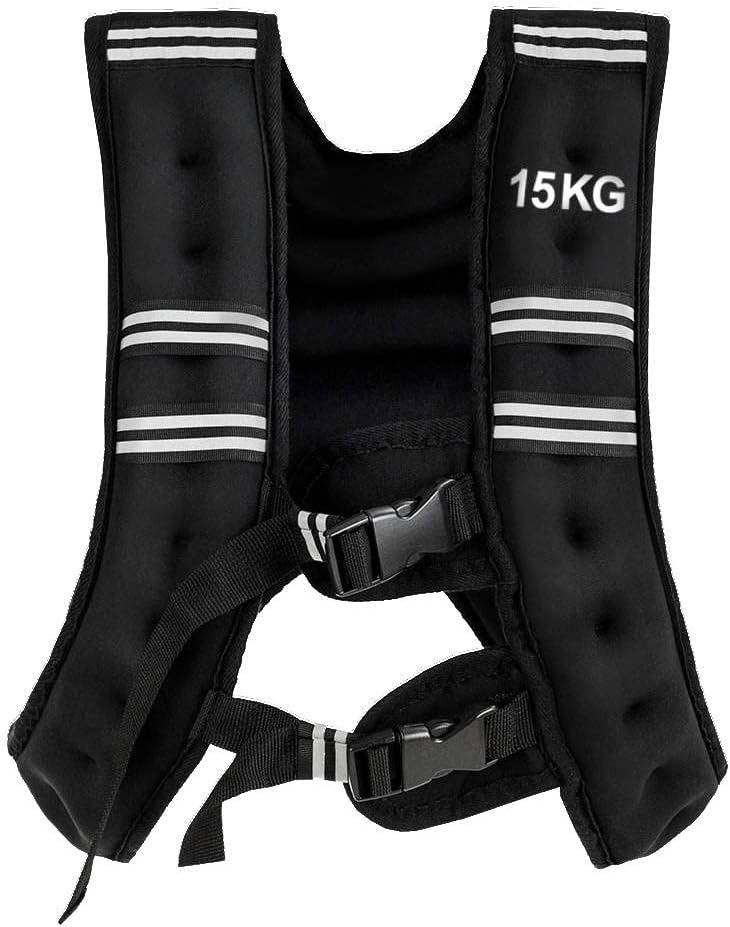Rucking Revolution: Transforming Triathlon Training
 Karen Parnell
November 17, 2023
Karen Parnell
November 17, 2023
Rucking Revolution: Transforming Triathlon Training
In the dynamic world of fitness, athletes are constantly seeking innovative ways to enhance their performance and elevate their training routines. One such method gaining popularity is "rucking." Originally a military training exercise, rucking has transitioned into the realm of civilian fitness, proving to be a versatile and effective training tool for various athletes, including triathletes. This article explores what rucking is, its benefits, the essential kit required (both purchased and homemade), and why triathletes should consider incorporating it into their training regime.
This website uses affiliate links which may earn a commission at no additional cost to you. As an Amazon Associate I earn from qualifying purchases.

Get your FREE guide to Running Technique
What is Rucking?
Rucking is a simple yet powerful form of exercise that involves walking or hiking with a loaded backpack, commonly known as a rucksack. The added weight provides resistance, transforming an ordinary walk into a full-body workout. The primary objective of rucking is to cover a certain distance with the extra load, combining cardiovascular endurance with strength training.
Benefits of Rucking - Combining Cardio and Strength
- Cardiovascular Endurance: Rucking provides an excellent cardiovascular workout, helping to improve heart health, stamina, and endurance. The combination of walking and carrying weight engages the cardiovascular system in a unique way, making it an effective alternative to traditional forms of cardio exercise.
- Strength Training: Unlike traditional cardio exercises, rucking also engages various muscle groups, turning it into a low-impact strength training session. The added weight challenges the muscles in the legs, back, and core, contributing to increased strength and muscle tone.
- Calorie Burn: Rucking with added weight increases the number of calories burned compared to regular walking. This makes it an efficient way to enhance weight loss or maintain a healthy body weight.
- Mental Toughness: The mental aspect of rucking should not be underestimated. Carrying a load for an extended period requires mental resilience and discipline, crucial attributes for triathletes facing challenging race conditions.
- Back Health: Researchers in Canada believe rucking can help relieve and prevent back pain because the weight “pulls” your spine into a position that compresses its discs less.
- Bone Density Boost: Weight-bearing activities, like rucking, increase bone density. Research has shown that regular ruckers have denser bones, reducing the risk of fractures.
Would you like a free training plan, swimming book or recipe book? Click here.
Essential Rucking Kit
- Rucksack/Backpack: A sturdy backpack designed for carrying heavy loads is essential. Look for one with padded straps and a waist belt to distribute the weight evenly.
- Weights: Start with a moderate weight and gradually increase as your strength improves. You can use traditional weights, sandbags, or even water bottles for homemade alternatives.
- Proper Footwear: Invest in comfortable and supportive hiking boots or shoes. They provide stability and protect your feet during longer rucking sessions.
- Hydration System: Staying hydrated is crucial, especially during extended rucking sessions. Use a hydration bladder or water bottles strategically placed in your backpack.
Example Rucking Backpack from Amazon for £43.99
Get your FREE 10k Trail Running Training Plan
Homemade Rucking Kit
- Rucksack/Backpack: A sturdy backpack designed for carrying heavy loads is essential. Look for one with padded shoulder straps and a waist belt to distribute the weight evenly.
- DIY Sandbags: Create your own sandbags using sturdy bags and sand. This allows you to customize the weight and distribute it within the backpack.
- Improvised Weights: Utilize water bottles, rocks, or other heavy objects for a cost-effective alternative to traditional weights.
- Your pack should feel secure on your back and the weight should not be shifting inside your backpack. The easiest way to load your backpack is to lay it on a flat surface and open the main compartment.
- Place your weight on the backpack. It should be centred and high on the backpack. Use old clothing or towels to fill in the bottom and sides of the pack. This will secure your weight from moving around. Some people use yoga blocks at the bottom of the pack to make sure the weight doesn't slide down.
- Next, zip up your backpack, tightened all the compression straps, and try it on. Move around. How does it feel? Is the weight high in the pack and close to the middle of your back? If you are feeling movement, you may need to add more padding around the weight or tighten down the pack more. Once you get the fit right, you are ready to get out and start rucking.

Packing a backpack for Rucking
Purpose made Rucking Kit
There are companies that manufacture rucking specific kit like the backpack with weight from Force Fitness. The one below is a backpack with a weight and you can chose from 5kg up to 25kg or you can buy the rucksack with no weights. The price ranges from £99 up to £139.95 depending on the weight you choose. It has an pouch for you weights and also an area for a laptop or hydration system. It has extra padding around the shoulders and lumbar region so you can comfortably carry the extra weight.
Amazon: Force Fitness Rucking Backpack £99 to £138.95 depending on weight selected
Force Fitness Rucking backpack and weights - made for rucking
Get your FREE 10k Trail Running Training Plan
Any alternative is to purchase a weighted vest which have been around for years. This example is from Maxmass and weighs 15kg and is only £39.99 on Amazon. The sand is distributed throughout the vest – back and front – so will give you a different workout with more balance.
Would you like a free training plan, swimming book or recipe book? Click here.
Amazon: Maxmass 15kg Weighted Vest £39.99
Maxmass weighted vest for rucking
Would you like a free training plan, swimming book or recipe book? Click here.
Triathlete-Specific Benefits of Rucking
- Cross-Training: Rucking combines elements of running and strength training, making it an ideal cross-training activity for triathletes. It helps prevent the monotony of training while providing unique benefits.
- Low-Impact Strength: Triathletes often face the challenge of maintaining strength without causing excessive impact on joints. Rucking offers a low-impact way to build strength, reducing the risk of injury.
- Simulates Race Conditions: Rucking's mental toughness aspect closely aligns with the mental challenges of a triathlon. The discipline required to carry extra weight for an extended period can prepare triathletes for the mental demands of race day.
- Time Efficient: You can combine your normal scheduled run with strength training in one go.
- Ideal of your off-season: Hiking or walking outside in your off-season is an ideal way to keep you mentally and physically fit. Add to this a backpack and you also have the benefits of lifting to enhance your muscle and bone strength.
If you are not used to rucking then start with an empty rucksack or lightly pack rucksack and hike rather than run. Once you get used to the bag on your back and made sure it does not rub or move around too much you can start to run and then add extra weight. But walking or hiking with a backpack will have benefits so running is not necessary.
Conclusion: Rucking for Triathletes
In the ever-evolving landscape of athletic training, rucking stands out as a versatile and effective tool for triathletes. Combining the benefits of cardiovascular endurance, strength training, and mental toughness, rucking offers a unique approach to fitness. With a minimal investment in the right equipment, including both purchased and homemade options, triathletes can enhance their training regimen and take a step closer to achieving their performance goals.
So, lace up your boots, load up your backpack, and embrace the power of rucking on your journey to triathlon success.
Karen Parnell is a Level 3 British Triathlon and IRONMAN Certified Coach, 8020 Endurance Certified Coach, WOWSA Level 3 open water swimming coach and NASM Personal Trainer and Sports Technology Writer.
Karen is currently studying for an MSc in Sports Performance Coaching at the University of Stirling.
Need a training plan? I have plans on TrainingPeaks and FinalSurge:
I also coach a very small number of athletes one to one for all triathlon and multi-sport distances, open water swimming events and running races, email me for details and availability. Karen.parnell@chilitri.com
Get your FREE Guide to Running Speed and Technique
Get your FREE Swim Workouts for Triathletes E-book
Get your FREE Open Water Swimming Sessions E-Book
Get you FREE 31 Structured Indoor Cycling Sessions and Training Plan

Get your FREE guide to Running Technique
Would you like a free training plan, swimming book or recipe book? Click here.
Rucking for Triathletes: Frequently Asked Questions (FAQ)
1. What is rucking, and how does it differ from traditional walking or hiking?
Rucking involves walking or hiking with a loaded backpack, adding resistance to the activity. Unlike traditional walking or hiking, the added weight challenges the cardiovascular system and engages various muscle groups, making it a more comprehensive workout.
2. What benefits does rucking offer to triathletes?
Rucking combines cardiovascular endurance with strength training, making it an excellent cross-training activity for triathletes. It provides a low-impact way to build strength, enhances mental toughness, and simulates race conditions, preparing athletes for the challenges they may face during a triathlon.
3. Can anyone start rucking, or is it only for seasoned athletes?
Rucking is accessible to individuals of various fitness levels. Beginners can start with a lighter load and gradually increase the weight as they build strength. It's a scalable activity that can be tailored to individual fitness levels and goals.
4. What kind of backpack should I use for rucking?
Choose a sturdy backpack designed for carrying heavy loads. Look for padded shoulder straps, a waist belt, and sufficient capacity. Ensure the backpack distributes weight evenly to prevent discomfort or strain during longer rucking sessions.
5. How much weight should I carry while rucking?
Start with a moderate weight that challenges you but allows you to maintain proper form. Beginners may begin with 10-20 pounds and gradually increase as their strength improves. Listen to your body and avoid overloading too quickly to prevent injury.
6. Can I make my own rucking weights at home?
Yes, you can create your own rucking weights at home. Sandbags, water bottles, or rocks placed in sturdy bags are common DIY options. This allows for customization of weight and provides a cost-effective alternative to traditional weights.
7. Is rucking a suitable exercise for weight loss?
Yes, rucking can contribute to weight loss by increasing the number of calories burned during exercise. The combination of cardiovascular activity and strength training makes it an efficient workout for those looking to shed pounds or maintain a healthy body weight.
8. How often should I incorporate rucking into my triathlon training routine?
The frequency of rucking depends on your overall training plan and goals. As a cross-training activity, integrating rucking once or twice a week can provide valuable benefits without overloading your training schedule.
9. Can rucking replace traditional running or strength training in a triathlete's routine?
Rucking can be a valuable addition to a triathlete's training regimen, but it's not necessarily a replacement for traditional running or focused strength training. It offers a unique combination of both elements, providing variety and additional benefits to support overall performance.
10. Are there any safety precautions or considerations for rucking?
Pay attention to proper form to avoid strain or injury. Start with a manageable weight and progress gradually. Ensure your footwear provides adequate support, stay hydrated during rucking sessions, and listen to your body to prevent overexertion. If you have any pre-existing health conditions, consult with a healthcare professional before incorporating rucking into your routine.
Would you like a free training plan, swimming book or recipe book? Click here.

Photo by Fabio Comparelli on Unsplash
References
Get Unbelievably Fit With Rucking (UPDATED 2022) – 3V Gear
Rucking Benefits | Rucking for Runners (runnersworld.com)
031 - Dr. Stuart McGill — Glorious Professionals Podcast
The Science-Backed Benefits of Rucking for Your Body and Mind (enduralab.com)



